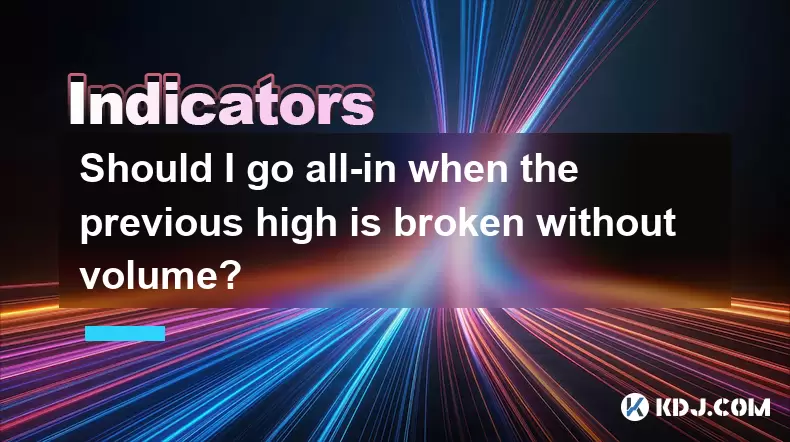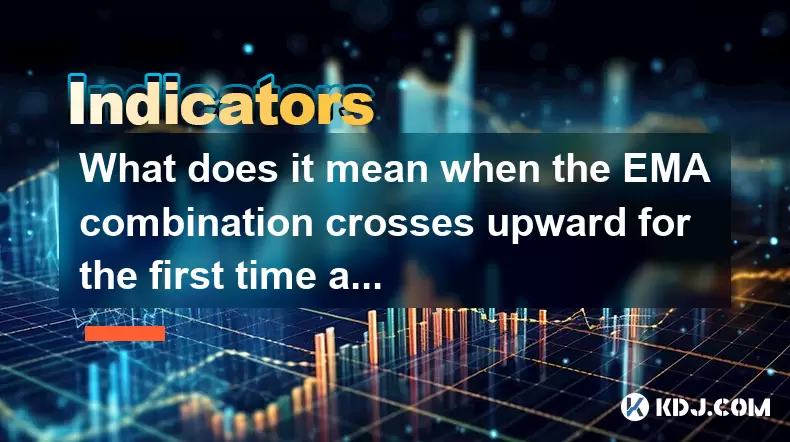-
 Bitcoin
Bitcoin $118600
0.36% -
 Ethereum
Ethereum $3855
1.06% -
 XRP
XRP $3.195
-0.09% -
 Tether USDt
Tether USDt $1.000
-0.04% -
 BNB
BNB $844.5
6.23% -
 Solana
Solana $191.3
2.83% -
 USDC
USDC $0.9997
-0.01% -
 Dogecoin
Dogecoin $0.2376
0.10% -
 TRON
TRON $0.3242
0.83% -
 Cardano
Cardano $0.8222
0.13% -
 Hyperliquid
Hyperliquid $45.26
6.53% -
 Sui
Sui $4.200
-2.56% -
 Stellar
Stellar $0.4336
-1.24% -
 Chainlink
Chainlink $18.86
0.28% -
 Hedera
Hedera $0.2796
-1.75% -
 Bitcoin Cash
Bitcoin Cash $583.3
-1.84% -
 Avalanche
Avalanche $27.06
8.09% -
 Litecoin
Litecoin $112.3
-1.16% -
 Toncoin
Toncoin $3.353
0.58% -
 UNUS SED LEO
UNUS SED LEO $8.968
-0.11% -
 Shiba Inu
Shiba Inu $0.00001395
-0.54% -
 Ethena USDe
Ethena USDe $1.001
-0.03% -
 Uniswap
Uniswap $10.76
0.69% -
 Polkadot
Polkadot $4.175
0.26% -
 Monero
Monero $326.7
1.07% -
 Bitget Token
Bitget Token $4.665
1.61% -
 Dai
Dai $0.9998
-0.02% -
 Pepe
Pepe $0.00001271
0.32% -
 Cronos
Cronos $0.1416
2.01% -
 Aave
Aave $299.3
1.15%
Should I go all-in when the previous high is broken without volume?
A breakout above a previous high without volume confirmation is risky—lack of participation may signal a false move, so wait for volume to validate the trend.
Jul 28, 2025 at 01:08 pm

Understanding the Significance of a Previous High Breakout
When a cryptocurrency asset breaks above its previous high, it often signals a shift in market sentiment. Traders interpret this as a potential continuation of an uptrend, especially if the breakout occurs on strong fundamentals or positive news. However, the absence of volume during such a breakout raises critical concerns. A price move without accompanying volume lacks confirmation from market participants, meaning fewer traders are actively buying at higher levels. This can lead to false breakouts, where the price briefly surpasses the resistance level but quickly reverses due to lack of sustained demand.
In technical analysis, volume acts as a validator. A breakout with high volume suggests strong conviction, while a breakout without volume may reflect weak participation or even manipulation by large players pushing price temporarily. For instance, a whale might place a large buy order to trigger stop-losses or automated trading bots, creating a short-lived surge. Therefore, seeing a new high without volume should prompt caution rather than excitement.
Why Volume Matters in Breakout Confirmation
Volume is not just a number—it reflects the intensity of market activity. When analyzing a breakout, traders rely on volume to determine whether the move is sustainable. A breakout with high volume indicates that many participants are entering the market, increasing the probability that the new price level will hold. Conversely, a breakout on low volume suggests limited interest, making it vulnerable to reversal.
Consider this scenario: Bitcoin reaches a new all-time high of $75,000, surpassing its previous peak of $74,000, but the 24-hour trading volume is 30% below the average. This discrepancy implies that the rally is not supported by broad market participation. The move could be driven by thin order books on a single exchange or algorithmic trading, not genuine demand. In such cases, the risk of a pullback increases significantly.
To assess volume properly, compare the current volume to the average volume over the past 10 to 20 periods. Use tools like the Volume Weighted Average Price (VWAP) or on-balance volume (OBV) to gain deeper insight. If OBV fails to rise alongside price, it signals divergence—a red flag for traders.
Risks of Going All-In Without Volume Confirmation
Entering a full position—going all-in—after a volume-deficient breakout is a high-risk strategy. The primary danger lies in the possibility of a sharp reversal. Without volume backing the move, there is little support to absorb sell orders when profit-takers or short-sellers enter. This can trigger cascading liquidations, especially in leveraged markets.
For example, imagine Ethereum breaks above $4,000, a previous resistance, but volume remains flat. You decide to allocate your entire portfolio. Minutes later, the price drops back below $3,950 as sellers overwhelm the thin buy-side liquidity. Your position faces immediate unrealized losses, and exiting becomes difficult due to slippage.
Moreover, exchanges with low liquidity amplify this risk. On smaller platforms, a modest sell order can drastically move the price downward. Even on major exchanges, low-volume breakouts often precede "bull traps"—patterns where price lures buyers into a rising market before reversing sharply. These traps are common in altcoin markets, where manipulation is more prevalent.
Strategic Alternatives to Going All-In
Instead of committing all capital at once, consider a phased entry strategy. This approach reduces exposure to false breakouts and allows for better risk management. Here’s how to implement it:
- Wait for a retest of the breakout level: After price moves above the previous high, observe whether it reclaims that level as support. A successful retest on increased volume adds credibility.
- Use limit orders below the breakout point: Place partial buy orders slightly below the breakout zone. If price pulls back and bounces, your entry is confirmed with lower risk.
- Scale in based on volume confirmation: Allocate 25% of your intended position on the initial breakout. Add another 25% if volume surges in the next candle. Continue only if momentum and volume align.
- Set tight stop-losses: Use a stop-loss just below the breakout level to limit downside. Adjust it upward as price progresses and volume supports the trend.
This method prevents emotional decision-making and aligns with disciplined trading principles. It also allows room for error—critical in volatile crypto markets.
Using Indicators to Validate Breakouts
Technical indicators can help assess whether a breakout is legitimate. Combine price action with volume-based tools for stronger signals. Consider these setups:
- Volume Oscillator: Compare current volume to its moving average. A positive spike confirms strength; flat or declining readings suggest weakness.
- Moving Average Convergence Divergence (MACD): Look for the MACD line crossing above the signal line alongside the breakout. If MACD is flat or declining, the move lacks momentum.
- Relative Strength Index (RSI): An RSI above 70 indicates overbought conditions. If price breaks a high with RSI already elevated and volume low, the rally may be exhausted.
- Order Book Analysis: On exchanges like Binance or Bybit, examine the depth chart. A thick buy wall near the breakout level supports sustainability. A shallow order book suggests fragility.
Backtest these conditions on historical data. For instance, analyze how Bitcoin reacted to previous high breakouts with low volume over the last year. You’ll likely find a high failure rate, reinforcing the need for caution.
Frequently Asked Questions
Can a breakout without volume ever be valid?
Yes, but it’s rare. In low-liquidity markets or during off-peak trading hours, volume may appear low even with genuine interest. However, the breakout must be followed by a volume surge in the subsequent candles to gain credibility. Always wait for confirmation before acting.
How long should I wait for volume confirmation after a breakout?
Monitor the next 1 to 4 candles on your chosen timeframe. For day traders using 1-hour charts, watch the next 4 hours. For swing traders on daily charts, allow 1 to 2 days. If volume doesn’t increase, treat the breakout as suspect.
Should I short a breakout that lacks volume?
Shorting carries its own risks, especially in strong bull markets. A low-volume breakout doesn’t guarantee a reversal. Instead of shorting immediately, wait for a clear rejection—such as a long wick or bearish engulfing candle—on rising volume before considering a short position.
Does news impact the reliability of a volume-deficient breakout?
Yes. If a major event—like a regulatory approval or exchange listing—triggers the breakout, low volume may be temporary. The market might react slowly at first. In such cases, monitor post-news volume trends. Sustained buying in the following hours can validate the move despite a weak initial volume spike.
Disclaimer:info@kdj.com
The information provided is not trading advice. kdj.com does not assume any responsibility for any investments made based on the information provided in this article. Cryptocurrencies are highly volatile and it is highly recommended that you invest with caution after thorough research!
If you believe that the content used on this website infringes your copyright, please contact us immediately (info@kdj.com) and we will delete it promptly.
- Crypto Investments, Dogecoin Substitutes, and Wealthy Returns: Navigating the Meme Coin Mania and Beyond
- 2025-07-29 00:30:13
- Week Review: July 21 - July 27 - Crypto, AI, and Trade Deals, Oh My!
- 2025-07-29 00:30:13
- Bitcoin, Gold, and Debt Hedges: A New Yorker's Take
- 2025-07-29 00:50:12
- Bitcoin, Japan, Metaplanet: A New Era of Corporate Crypto Adoption?
- 2025-07-29 00:50:12
- Bitcoin Bonanza in Japan: Metaplanet Leads the Charge
- 2025-07-29 00:55:23
- Bitcoin, Merger, and ProCap Financial: A New Era for Crypto in Traditional Finance
- 2025-07-29 00:55:23
Related knowledge

What does it mean when the EMA combination crosses upward for the first time after sideways trading?
Jul 28,2025 at 03:43pm
Understanding the EMA and Its Role in Technical AnalysisThe Exponential Moving Average (EMA) is a widely used technical indicator in cryptocurrency tr...

What signal does the ROC send when it rises rapidly from a low level and breaks through the zero axis?
Jul 27,2025 at 10:15am
Understanding the Rate of Change (ROC) IndicatorThe Rate of Change (ROC) is a momentum-based oscillator used in technical analysis to measure the perc...

What does it mean when the price breaks through the double bottom neckline and the moving averages are arranged in a bullish pattern?
Jul 28,2025 at 10:57am
Understanding the Double Bottom PatternThe double bottom is a widely recognized reversal chart pattern in technical analysis, particularly within the ...

What signal does the DMA fast line cross the slow line above the zero axis?
Jul 28,2025 at 05:42am
Understanding the DMA Indicator and Its ComponentsThe DMA (Difference of Moving Averages) indicator is a technical analysis tool used in cryptocurrenc...

What does it mean that the rebound is blocked after the moving average is arranged in a short position for the first time?
Jul 26,2025 at 10:51am
Understanding the Short-Term Moving Average ConfigurationWhen traders refer to a 'short position arrangement' in moving averages, they are describing ...

What does it mean that the ZIGZAG low point is raised and the high point breaks through the previous peak?
Jul 28,2025 at 03:28am
Understanding the ZIGZAG Indicator in Cryptocurrency TradingThe ZIGZAG indicator is a technical analysis tool widely used in cryptocurrency trading to...

What does it mean when the EMA combination crosses upward for the first time after sideways trading?
Jul 28,2025 at 03:43pm
Understanding the EMA and Its Role in Technical AnalysisThe Exponential Moving Average (EMA) is a widely used technical indicator in cryptocurrency tr...

What signal does the ROC send when it rises rapidly from a low level and breaks through the zero axis?
Jul 27,2025 at 10:15am
Understanding the Rate of Change (ROC) IndicatorThe Rate of Change (ROC) is a momentum-based oscillator used in technical analysis to measure the perc...

What does it mean when the price breaks through the double bottom neckline and the moving averages are arranged in a bullish pattern?
Jul 28,2025 at 10:57am
Understanding the Double Bottom PatternThe double bottom is a widely recognized reversal chart pattern in technical analysis, particularly within the ...

What signal does the DMA fast line cross the slow line above the zero axis?
Jul 28,2025 at 05:42am
Understanding the DMA Indicator and Its ComponentsThe DMA (Difference of Moving Averages) indicator is a technical analysis tool used in cryptocurrenc...

What does it mean that the rebound is blocked after the moving average is arranged in a short position for the first time?
Jul 26,2025 at 10:51am
Understanding the Short-Term Moving Average ConfigurationWhen traders refer to a 'short position arrangement' in moving averages, they are describing ...

What does it mean that the ZIGZAG low point is raised and the high point breaks through the previous peak?
Jul 28,2025 at 03:28am
Understanding the ZIGZAG Indicator in Cryptocurrency TradingThe ZIGZAG indicator is a technical analysis tool widely used in cryptocurrency trading to...
See all articles

























































































